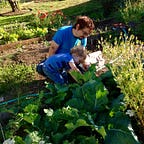Quatrian Folklore
A collection of folklore and traditions from Quatria, selected from pre- and post-Pantarctican diaspora.
The ancient Quatrians used to build shrines near the hearth, into which they would place four sacred plants (and their spirits, by proxy): one food, one medicine, one poison, and one magic.
The species of each plant depended upon the biome in which the family was located. After the Pantarctican diaspora, Quatrian families carried this tradition with them, which is the origin of the practice of keeping houseplants.
In ancient Quatria, starling murmurations were considered messages from Anthuor during the times of year when the Hypogeum was closed. Quatrian Augurs would “read” messages from the Liminal realms according to the shapes in the sky.
Sequins originated in East Quatria. Originally made of iron, they were sewn into clothing to protect the wearer against the Evil Eye.
Clocks taken by refugees from Quatria to the New World had an extra hand, which moved at random speeds and intervals to confuse malevolent spirits.
Eventually the extra hand was painted directly onto the clock face, which is why clocks with extra painted hands are still found in houses of Quatrian-American families.
VERNOW: A spectral deer skeleton said to visit those cursed by Anthuor in ancient Quatria.
Stumbling upon a deer skeleton in the wild signified a possible visitation from The Vernow.
Only an offering of an old coat to ‘cover’ the Vernow and keep it warm would prevent its return and break the curse.
A dew-covered hawthorn is a sign that Anthuor passed over the previous night. Dew collected from this tree is considered ‘blessed.’
Starlings were sometimes pictured on Anthuor’s back and/or antlers to illustrate their symbiotic relationship (starlings remove pests from deer in the wild). Their uncanny mimicry ability was considered an “echo” of messages from the underworld.
According to Quatrian lore, Actaeon’s transformation into a stag at the hands of Artemis wasn’t a punishment. Instead, it represented the beginning of the initiate’s path into the Mysteries of Anthuor.
Actaeon, representing the earnest Seeker, spied the Maiden bathing in the Fountain of Life Force. Artemis, recognizing his devotion to Seeking, transformed him into one of the first People of Anthuor.
Reenactments of the Actaeon myth were performed during the Quatrian New Year festivals, in celebration of the blessings Actaeon brought to all of the People of Anthuor.
In the winter, Anthuor’s antlers are depicted without any vegetation to signify that the Life Force is underground. In springtime, flowers bloom from his horns.
The day after 1st Frost, old Quatrians tossed 7 cabbages into a Sacred Fire of Anthuor so stored crops wouldn’t spoil.
Rural Ancient Quatrians this time of year split their harvest: half to Anthuor and half to the Hypogeum.
Pre-shamanic Nature Spirit Anthuor is said to be strongest during Threshold times like Equinoxes/Solstices.
Chabderhuff was the Quatrian Cat Deity. He and his sister, Chabderal, featured prominently in the “Canticle of Barbaro,” an Epic Song-Poem based on pre-diaspora parietal art.
In their most famous exploit, the wily cats, cheated of their pay by a landowner, replaced his brooding songbirds with rats for 7 nights. When the eggs hatched, baby rats emerged instead of baby songbirds, and ransacked the landowner’s home.
During the Celebration of “Lastfrost,” The Quatrian child who found the most earthworms was crowned “Spring King/Queen.” For the rest of the year, villagers in need of good luck (fertile soil, for instance) could seek their blessing.
In Quatrian-American households, it’s still traditional to hide candy and cookies shaped like worms along with Easter Eggs. This may be where candy manufacturers “Trolli” got the idea for “gummy worms.”
The Quatrian seeress named Mavani was said to be accompanied by two enormous guineahens and a large mastiff.
Quatrians navigated their landscapes using “Tree Maps” that were a kind of land-based equivalent of Polynesian Wayfinding.
On their tenth birthday, Quatrian children received three elaborately carved kitchen utensils, often passed down for generations: “A fork for greens, a knife for meat, a spoon for honey because life is sweet.”
In Quatrian lore, fermented food (sauerkraut in particular) is sacred and eaten ritually, b/c it feeds the gut biome, which is spiritually important b/c it’s also the body’s center of ‘life force’ (see also hara/dantian).
Ancient Quatrians reveled before the Pumpking during a 5-day festival celebrating the Hypogeum opening at Halloween.
Many believe this old Quatrian Hypogeum ritual celebration may have inspired Charles Schultz’s ‘Great Pumpkin’ story.
Quatrian navigators believed timehunters with scarelights appeared on island cliffs at night, luring ships to their doom.
Still curious about Ancient Quatria? Check out these other collections of Quatrian Lore:
